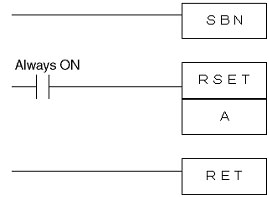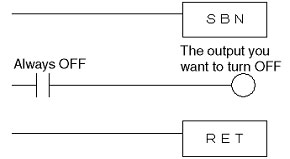Is there an instruction that can be used in a subroutine to turn OFF an output bit that was turned ON?
Yes, the RESET instruction (RSET) or Always OFF Flag can be used in a subroutine to turn OFF a bit that was turned ON in the main program.
Using the RESET Instruction (RSET)
*A = The output you want to turn OFF
Using the Always OFF Flag